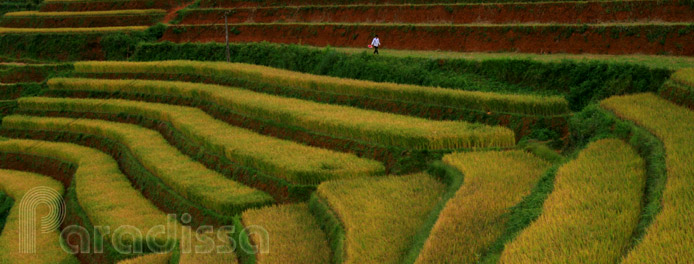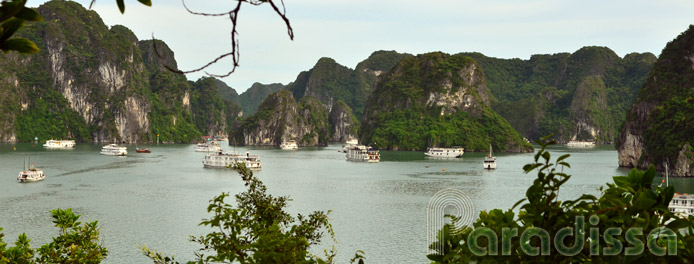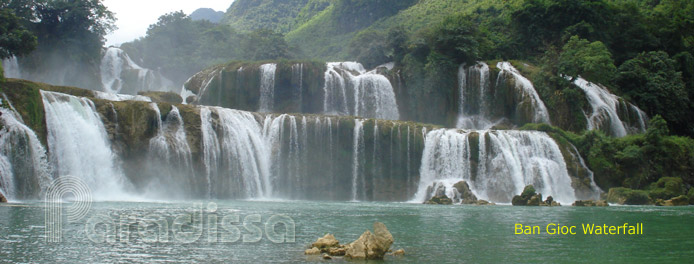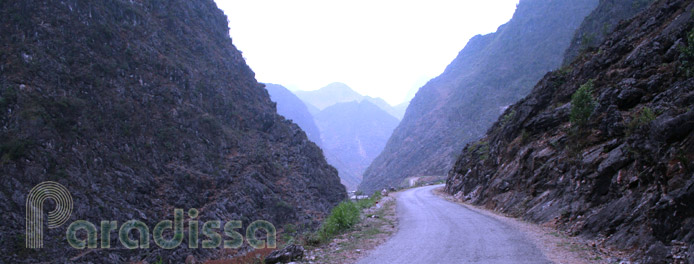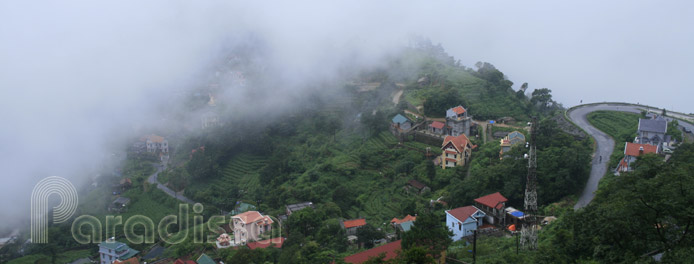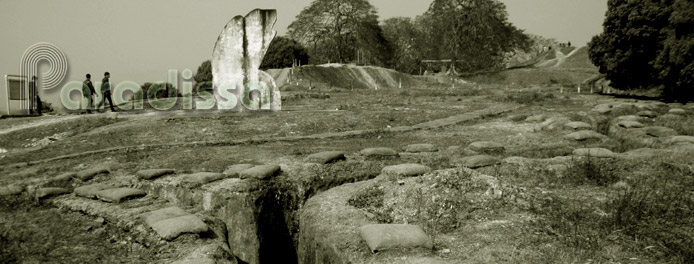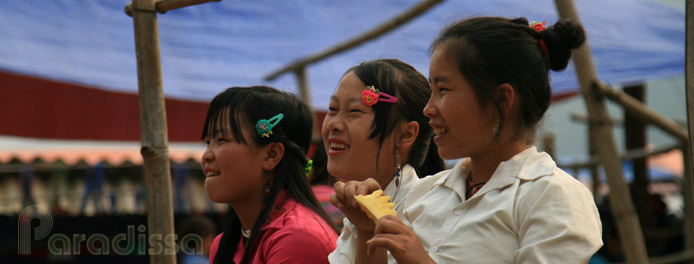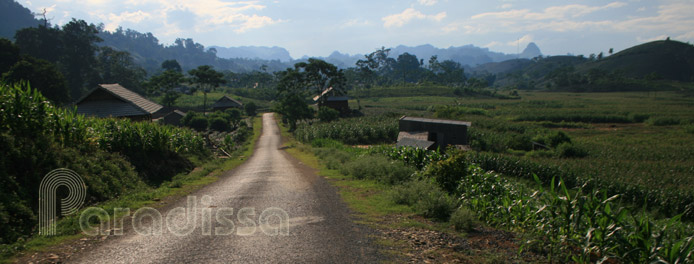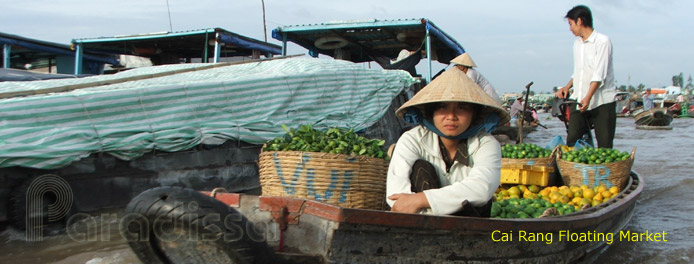Enjoying local food and drinks is essential to have a great vacation in Vietnam. Exploring local cuisine in a thorough way may get you some good knowledge of an important element of the Vietnamese culture.
Paradissa general guide to the Vietnamese food and drinks is to get you some ideas about the food you are to get traveling in Vietnam. Our dedicated foodies will have other posts which will go further introducing you to different dishes of the amazing Vietnamese cuisine.
1/ Foodstuffs in Vietnam
Local open-air markets sell a variety of fresh meat, poultry, fish and seafood. If cooked properly there should be no health problems. Open-air markets also sell a variety of fresh fruits and produce either grown locally or imported from the cooler mountain regions in the far-north, near Da Lat or from Ho Chi Minh City/Saigon, China or Thailand.

Fresh prawns at an open market in Hanoi Vietnam

Fresh crabs at a market

Alive eels at a local market

Fresh squids at a local market
As the Vietnamese economy has gotten better and better, there is a wide range of imported meat (mostly lamb, beef, chicken) which can be found in supermarkets all over the country.
Full-cream fresh milk is available. A wide range of dairy products including UHT milk (whole, low fat and skim), powdered milk, butter and imported cheese is readily available.
2/ Drinks in Vietnam
Drinks in Vietnam range from bottled water, soft drinks, local fresh fruit juice to different types of draught beer, wine, whisky...or brandy. They are available in all tourist areas as well as different rural areas.

Vietnamese tea and coffee are very strong and may keep those not used to them awake all night. The traveller may want to give them a miss if having difficulty with sleep.
The traveller should not drink tap water and should exercise precaution when served iced drinks. Normally the ice which comes in cube shape uses treated water and safer than that in broken forms.
3/ Vietnamese cuisine
You are what you eat! Many consider food to be an essential ingredient of a culture, and this is particularly true of the Vietnamese food as it has some distinctive elements to be found in no other cuisine such as the infamous national condiment fish sauce or nuoc mam which is indispensable to most Vietnamese for their daily meals.
Although rice is the foundation of the Vietnamese diet, the cuisine is anything but bland. In their daily life, the Vietnamese have steamed rice for almost every lunch and dinner. In the countryside, farmers have steamed rice for all meals of a day.
Though influenced by French and Chinese cuisines, the Vietnamese cooking is highly innovative. Vietnamese cooking makes extensive use of fresh aromatic herbs, including lemon grass, basil, coriander, parsley, laksa leaf, perrila leaf, piper lolot leaves, lime, ginger, galangal, and chili.

Street dining at Hue, Vietnam
Many have found that Vietnamese cuisines are not as oily as Chinese ones and not as spicy as Thai ones. Basically Vietnamese cuisines are fresh and tend to retain the original flavors of each elements. Some Vietnamese dishes leave the diners the freedom to add more elements or spices as they like when dining such as Pho, noodle soup, vermicelli soup,..
3.1 Soup/Broth

Soup/Broth is served at almost every meal. There are different types of soup ranging from vegetables to seafood soup, from spicy to sweet and sour… Normally people add more spices or fresh herbs to enhance the fragrance and flavors to suite their own tastes. Westerners often have soup at the beginning of their meals and the Chinese have soup at the end of their meals, the Vietnamese have soup/broth mixed with their main dishes.
3.2 Snacks
Snacks are readily available in all over the country: dry beef with salad (Thit Bo Kho), Donut (Banh Ran), shrimp crackers (Banh Tom), bread (Banh My), rice crackers (Banh Da), fried spring-rolls (Nem Ran), Banh Chung,…
3.3 Meat
Meat (beef, pork, chicken, goat) accounts for only a minor portion of a traditional Vietnamese meal. As mentioned the Vietnamese eat steamed rice as the base of their meals. Another big portion of the meal is for vegetables and vegetable broths and herbs. Only a minor portion is for meat. The Vietnamese are among those in Asia and the world that consume the least meat portion at meals. This explains why the Vietnamese are quite small and skinny.

3.4 Fresh water fish, crabs, snails, shrimps
Fresh water fish, crabs, snails, shrimps… were once present more often in daily meals of farmers in the countryside. It was that in the past these aquatic species were abundant in the paddy fields. Nowadays they are specialties with high prices and they are caught for sales in cities whose residents are ready to pay higher prices for them.
3.5 Vegetables, Herbs
Vegetables and herbs are used a lot in Vietnamese cooking and diet. With different climatic regions in Vietnam, the country has several different types of fresh and green vegetables all year round.
On your trip to Vietnam, it'd be good to familiarize yourself with local environment first before trying unique local dishes. Allow yourself the first few days to try well cooked dishes and avoid iced drinks first, so your body is well adjusted. Then you can confidently try most local dishes later without any stomach problems.




